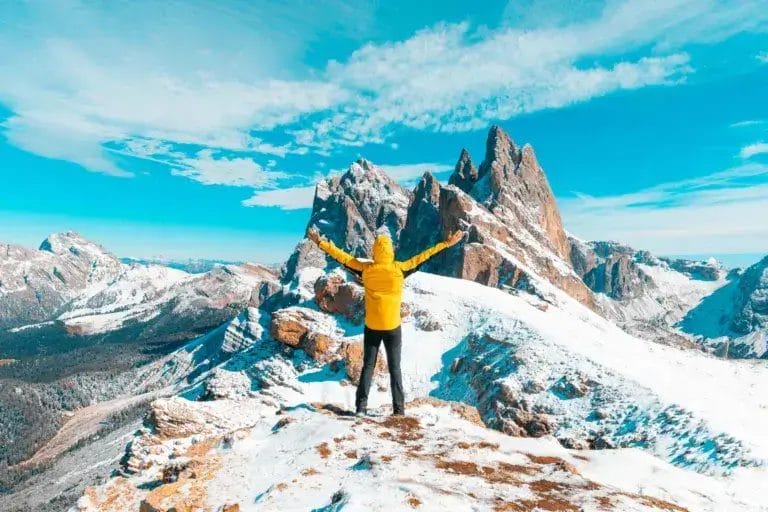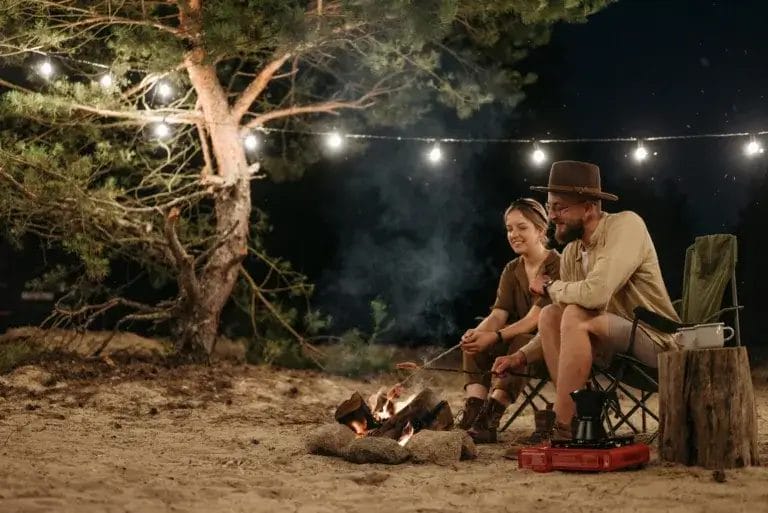Camping Packing List: The Complete Checklist and Pro Tips
Planning a camping trip sometimes feels overwhelming, especially when I’m staring at an empty duffel bag, trying to remember what I’ll actually need for three days in the wild. I can’t count how many times I’ve stood in my garage at 10 PM the night before a trip, frantically searching for my headlamp or questioning if I even own a decent sleeping pad.
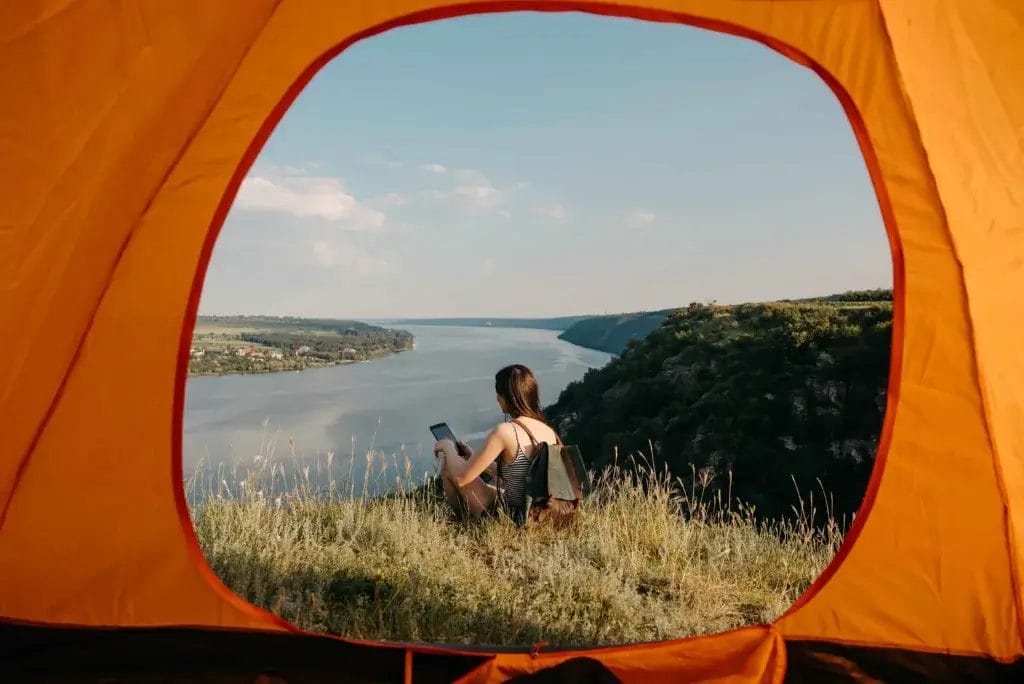
A well-organized camping checklist helps me bring everything I need for a safe, comfortable, and fun outdoor adventure – without overpacking or forgetting the essentials. After years of “I wish I’d brought that” moments, I’ve realized the secret to a great camping trip goes way beyond just picking a perfect campsite or hoping for good weather.
The real difference between a memorable adventure and a weekend of regret? Preparation. Whether you’re packing for your first tent camping trip or you’re a seasoned camper who just wants to fine-tune your system, a solid checklist takes away the guesswork and lets you actually enjoy your time outside.
Key Takeaways
- A complete camping packing checklist covers shelter, cooking gear, personal items, clothing, tools, and safety equipment.
- What’s essential changes with your camping style, the season, weather, and whatever you’ve got planned at your destination.
- Getting organized with a detailed camping checklist means you’re less likely to forget necessities and more likely to have a comfortable trip.
Here’s my list. I don’t always need all of these things, but it has everything I may need! Feel free to download if you’d find it helpful too! 🙂
Camping Essentials: Your Must-Have Packing List
Getting my gear right is what separates a magical outdoor experience from a long, uncomfortable night. I’ve found that focusing on quality shelter, reliable lighting, and a few comfort items makes all the difference.
Shelter and Sleeping Gear
My tent is always the first thing I pack. I usually go for one that’s a little bigger than I think I’ll need – cramped quarters are a recipe for bad sleep.
A sleeping bag rated for the right temperature keeps me cozy. I made the mistake once of bringing a 40°F bag when it hit 35°F at night. Never again.
Sleeping pads or an air mattress are a must. My back is happier every morning when I remember to bring one. Even a thin foam pad beats nothing.
I never skip my camping pillow now. Years of using wadded-up clothes were fine, but real head support? Game changer.
A tarp and tent footprint are always in my bag. These protective layers keep my tent in good shape and give me extra covered space if it rains.
Lighting and Power Sources
Headlamps are my favorite because they keep my hands free. I always toss in extra batteries; there’s nothing worse than fumbling in the dark.
My lantern makes the campsite feel cozy after sunset. It turns our little patch of outdoors into a warm, inviting space.
I stash multiple flashlights around camp. One in the tent, one in my backpack, and another clipped to my chair. Overkill? Maybe, but I’ve never regretted it.
Portable power keeps my phone charged for emergencies and photos. A small power bank barely weighs anything but is worth its weight in gold on longer trips.
Honestly, I think every smart camper brings backup lighting. When darkness falls, having options just makes everything easier and safer.
Campsite Comfort and Furniture
Camping chairs make every meal and sunset better. I like lightweight but sturdy chairs that actually support my back for those long evenings around the fire.
A camping table is a game-changer for food prep and card games. Eating off the ground gets old quickly, especially when ants show up.
My camp rug helps keep dirt out of the tent and makes the whole space feel homier. It’s a small thing, but I’d miss it if I left it behind.
Some folks call these comfort items luxuries, but they’re what turn “just surviving” into actual fun. For me, camping essentials are about both the basics and a few creature comforts.
Camp Kitchen Packing: Cooking, Eating, and Food Storage
Setting up my camp kitchen is honestly one of my favorite parts of camping. I need the right cooking gear, food that won’t spoil, and a plan for keeping things clean.
Camp Cooking Gear Checklist
I always start with my camp stove. It’s the heart of any good camp kitchen. A portable stove means I can cook even if campfires aren’t allowed or the weather’s bad.
My setup usually includes a two-burner stove and a backup single burner. With both, I can make multiple dishes at once and not stress about timing.
Essential cooking equipment:
- Cast iron skillet or non-stick pan
- Medium-sized pot with lid
- Lightweight griddle for pancakes and burgers
- Dutch oven for big meals and bread
- Sharp knife in a sheath
- Cutting board (doubles as a tray)
The little stuff matters, too. I pack utensils like a spatula, a wooden spoon, and tongs in a mesh bag so they don’t get lost. A can opener and a bottle opener are musts that first-timers often forget.
Bringing extra propane is just smart. Running out of fuel halfway through dinner is a mistake I only made once.
Food and Snack Essentials
Good food starts with a solid cooler and plenty of ice. I usually bring a 48-quart cooler for the main stuff and a smaller one for drinks and snacks.
Non-perishable staples I always pack:
- Rice and pasta
- Canned beans and soup
- Peanut butter and jelly
- Oatmeal for quick breakfasts
- Coffee and tea bags
- Salt, pepper, and a few basic spices
Fresh foods need a little more planning. I keep eggs in their carton, surrounded by soft items. Bell peppers and onions travel well and add flavor to just about anything.
Trail mix and granola bars are my go-to hiking snacks. I portion them out before the trip to avoid hauling extra weight.
Water bottles are just as important as food. I bring one per person per day, plus extras for cooking and cleaning. Proper food storage keeps everyone safe and helps avoid unwanted visitors.
Cleaning Up the Camp Kitchen
Dirty dishes aren’t fun, but keeping my camp kitchen clean is non-negotiable for food safety and respecting nature.
Biodegradable soap is always in my kit. Regular dish soap isn’t great for the environment, so the eco-friendly stuff is worth the extra few bucks.
My cleanup kit includes:
- Collapsible wash bins (one for washing, one for rinsing)
- Scrub sponges and a pot scrubber
- Quick-dry towels
- Heavy-duty trash bags
- Paper towels for quick cleanups
Hot water makes cleaning so much easier. I heat up a pot while we’re finishing dinner, then use it right away for dishes.
I always bring extra trash bags. You’ll make more trash than you expect, and double-bagging keeps things tidy for the next campers.
Cleaning as I go is key. I wash prep dishes before cooking and soak pots right after serving food. It saves me from scrubbing stuck-on messes later.
Personal Gear: Toiletries and Health Musts
Staying clean and healthy while camping isn’t complicated, but I do have to plan ahead. Packing the right toiletries and hygiene essentials, plus some basic health supplies, really makes the difference between a refreshing trip and a miserable one.
Toiletries and Hygiene
I always start with the basics that help me feel normal in the wild. My toothbrush and toothpaste are non-negotiable – clean teeth just make every camping day better.
I bring a small bottle of biodegradable soap that works for both body and hair. If I’m out for more than a couple of days, I’ll toss in some dry shampoo too. It’s a little luxury my hair appreciates.
Toilet paper is crucial. I learned this the hard way. Bring more than you think you’ll need and keep it in a waterproof bag. Baby wipes work great, too.
Here’s my must-have hygiene list:
- Hand sanitizer (at least 60% alcohol)
- Lip balm with SPF
- Deodorant (fragrance-free if you’re in bear country)
- Body wipes for quick cleanups
- Small towel or washcloths
Feminine hygiene products always get packed, even if I’m not expecting to need them. Nature doesn’t exactly follow my schedule, so I’d rather be safe than sorry.
Safety, Health, and Medications
My first-aid kit has saved more camping trips than I can count. I keep it simple but thorough with bandages, antiseptic wipes, pain relievers, and tweezers for splinter removal.
Sunscreen is absolutely crucial, even on cloudy days. The outdoors amplifies UV exposure, and I’ve seen too many friends turn lobster-red on their first day.
I use SPF 30 or higher and reapply every two hours. It’s not worth risking a sunburn just to save a few minutes.
Bug spray or insect repellent makes outdoor meals actually enjoyable instead of a swatting marathon. I prefer DEET-based repellents for serious protection, though natural options work for lighter bug activity.
Prescription medications need extra attention. I bring more than I need and store them in their original containers.
Heat-sensitive medications go in my cooler, not my hot car. I’ve learned that lesson the hard way.
My basic health essentials include:
- Thermometer
- Anti-diarrheal medication
- Allergy medication
- Burn gel or aloe vera
- Electrolyte packets
I pack everything in clearly labeled, waterproof containers. When you need something quickly, you don’t want to dig through soggy bags wondering which bottle contains what.
Clothing and Footwear: Dressing for Adventure
The right clothes can make or break your camping experience. Smart layering systems keep you comfortable in changing weather, while proper footwear protects your feet on any terrain.
Weather-Ready Clothing
I’ve learned the hard way that moisture-wicking base layers are absolutely essential for any camping trip. These synthetic or merino wool shirts pull sweat away from your skin, keeping you dry and comfortable.
My layering system always starts with a good base layer, then adds an insulating middle layer like fleece or down. For summer trips, I pack lightweight hiking shirts with built-in sun protection.
They’re perfect for those long days exploring trails. I don’t mess around with cotton anymore.
Essential clothing items:
- Base layers – synthetic or merino wool
- Insulating layers – fleece or down jackets
- Rain gear – waterproof jacket and pants
- Extra pants and shorts – depending on season
- Swimsuit – for unexpected swimming opportunities
My insulated jacket is a non-negotiable item, even in summer. Temperatures can drop dramatically at night, and I’ve been caught off guard more times than I care to admit.
Down jackets pack small but provide incredible warmth. Never skip the rain gear.
I don’t care if the forecast shows clear skies for a week straight. Weather changes fast in the outdoors, and getting soaked can quickly turn dangerous.
Footwear for the Outdoors
Your feet will thank you for investing in proper camping footwear. I’ve tried everything from sandals to heavy boots, and the right choice depends entirely on your planned activities.
Hiking boots remain my go-to choice for rugged terrain and multi-day trips. They provide ankle support and protection from rocks and roots.
Look for waterproof options if you’ll encounter wet conditions. Trail runners work beautifully for lighter camping trips.
They’re comfortable, dry quickly, and handle most terrain well. I pack these when weight matters or when I know the trails are well-maintained.
My footwear strategy:
- Primary shoes – hiking boots or trail runners
- Camp shoes – lightweight sandals or slip-ons
- Extra socks – wool or synthetic blend
- Water shoes – if near lakes or rivers
Don’t forget camp shoes for relaxing around the fire. Your feet need a break from boots, and slip-on sandals feel amazing after a long day hiking.
Accessories and Extra Layers
The little things make a huge difference in outdoor comfort. My sunglasses protect my eyes from harsh UV rays, especially at higher elevations where the sun feels more intense.
A good hat serves double duty – sun protection during the day and warmth retention at night. I prefer wide-brimmed styles for maximum coverage, though baseball caps work fine too.
Must-have accessories:
- Hat – wide-brimmed or baseball cap
- Gloves – lightweight for handling gear
- Buff or bandana – versatile protection
- Warm socks – extra pairs for sleeping
- Undergarments – quick-dry materials only
My backpack carries extra layers I might need throughout the day. Temperature swings happen fast in nature, so I pack a lightweight fleece or puffy jacket even on warm days.
Gloves might seem unnecessary, but they protect your hands when setting up camp or handling rough gear. Lightweight options take up almost no space but can be a lifesaver.
Navigation, Tools, and Repair Items
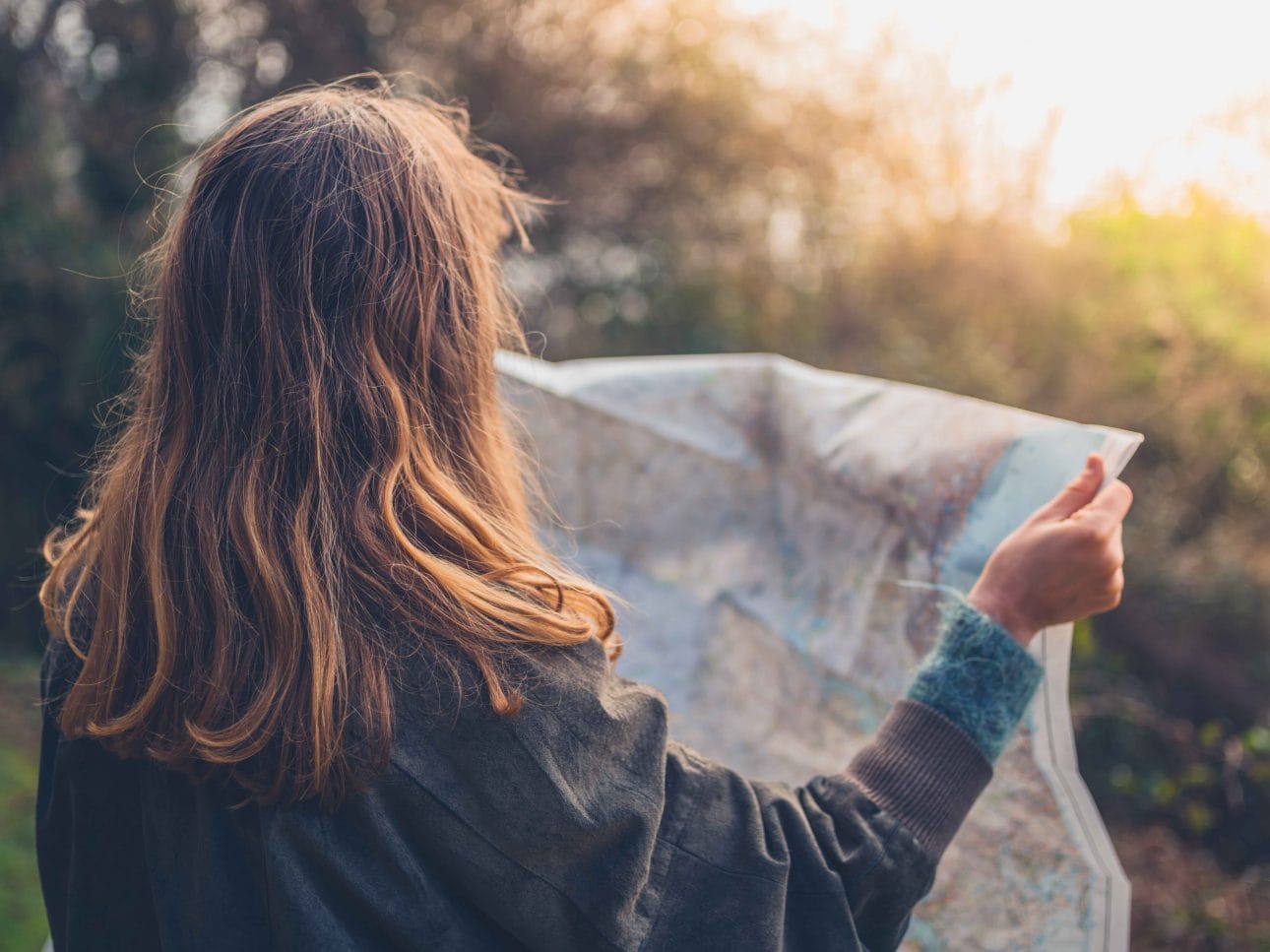
When I’m deep in the wilderness, having the right navigation tools and repair supplies can make the difference between a great adventure and a dangerous situation. These items help me stay on course and fix problems before they ruin my trip.
Navigation Tools
I never head into the backcountry without multiple ways to find my way. GPS devices are fantastic, but batteries die and electronics fail when you need them most.
My backup is always a compass and a topographic map. I learned this lesson when my phone died during a solo hike.
The compass never needs charging and works in any weather. For remote campsites, I carry both digital and analog navigation tools.
My GPS shows exact coordinates and tracks my route. But the compass gives me direction even when everything else fails.
I also bring a whistle for emergencies. Three sharp blasts is the universal distress signal.
It’s louder than your voice and saves energy if you’re lost or injured. I hope I never need it, but I always pack it.
Essential Camping Tools
A quality multi-tool is like having an entire toolbox in your pocket. Mine has pliers, knives, screwdrivers, and scissors.
I use it daily for everything from opening cans to adjusting tent stakes. Fire starter supplies are crucial, especially in wet conditions.
I pack waterproof matches, a lighter, and fire starter cubes. Wet wood doesn’t stand a chance against these backup options.
A folding saw beats trying to break branches with your hands. It cuts through deadfall quickly and safely.
I’ve used mine to clear trail obstacles and gather firewood. Portable power banks keep my GPS and phone charged.
Solar panels work great for longer trips. I bring extra batteries for headlamps and radios too, can’t hurt to be over-prepared.
Repair Supplies
Duct tape fixes almost everything. I’ve repaired torn tents, broken gear, and even patched hiking boots.
I wrap some around my trekking poles so it’s always handy. Paracord has saved my camping trips countless times.
It works as a clothesline, guy-lines for tarps, or emergency rope. The inner strands make excellent fishing line or thread for repairs.
I keep a small sewing kit with heavy thread and needles. Torn backpack straps or ripped jackets need immediate fixes.
Don’t forget essentials like your ID and credit card for emergencies. In bear country, bear spray belongs with your safety gear.
These items might seem basic, but you’ll miss them when they’re forgotten at home. Trust me on that one.
Adventure Extras and Camp Fun
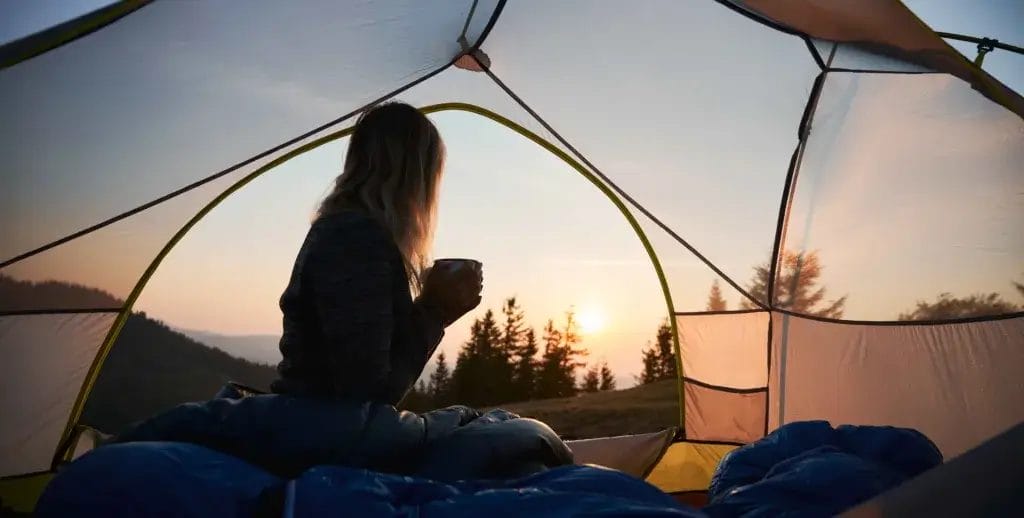
The best camping memories often come from those extra touches that transform a basic campsite into your personal outdoor playground. From gear that opens up new adventures to comfort items that make evenings around the fire even more special, these additions can elevate your entire experience.
Outdoor Recreation Gear
I’ve learned that bringing the right recreation gear can turn a good camping trip into an unforgettable adventure. Binoculars are great for wildlife watching; there’s nothing quite like spotting a deer family grazing at dawn or identifying birds you’ve never seen before.
Fishing gear opens up a whole world of possibilities, especially if you’re camping near water. Even if you’re not an experienced angler, a simple rod and tackle box can provide hours of peaceful entertainment.
I always pack a basic fishing kit because you never know when the perfect fishing spot will present itself. For water lovers, a kayak or inflatable paddleboard can transform your camping experience.
These days, you can find surprisingly compact options that fit in your car. I’ve discovered some of my favorite hidden coves and swimming spots by paddling around lakes near my campsite.
Don’t forget about land-based fun either. Frisbees, card games, and hiking gear like trekking poles can keep everyone entertained between meals and campfire stories.
Comfort Items and Entertainment
Nothing beats the feeling of a cozy campsite that feels like home. A camp rug might seem unnecessary, but it creates an instant gathering spot and keeps dirt out of your tent.
I’ve found that even a simple outdoor rug transforms the area around your picnic table into a welcoming living room. Portable speakers can set the perfect mood for cooking dinner or relaxing after a long hike.
Just remember to keep the volume respectful of other campers and wildlife. Hammocks are pure magic for lazy afternoons.
String one up between trees and you’ve got the perfect reading nook or napping spot. I always pack hammock straps to protect the tree bark while securing my setup.
String lights create an amazing ambiance once the sun sets. Solar-powered options are eco-friendly and eliminate the need for batteries.
They make your campsite feel festive and help create those Instagram-worthy moments we all secretly want. Sometimes, it’s the little extras that make the trip unforgettable.
Leave No Trace and Packing Tips
When I pack adventure extras, I remind myself that it’s up to me to protect these beautiful places. Leave No Trace principles always guide what I put in my pack.
I toss in extra trash bags and make sure I carry out everything I bring in. It’s a simple habit, but it matters.
When I pick out camping equipment and camping essentials, I lean toward multi-purpose items every time. A bandana? It’s my towel, pot holder, or a quick bandage if I need it.
Going this route keeps my pack lighter and cuts down on waste. I’ve found it’s just smarter all around.
I stash my fun stuff in weatherproof containers or dry bags. There’s nothing worse than soggy cards or a speaker that’s drowned after an unexpected downpour.
I keep similar items together in labeled bags or containers. All my recreation gear goes in one bin, so I can grab it fast without tearing my pack apart.
What I bring really depends on where I’m headed. Desert camping calls for different comfort items than a lakeside or mountain trip, so I try to plan for the specific environment.
Frequently Asked Questions
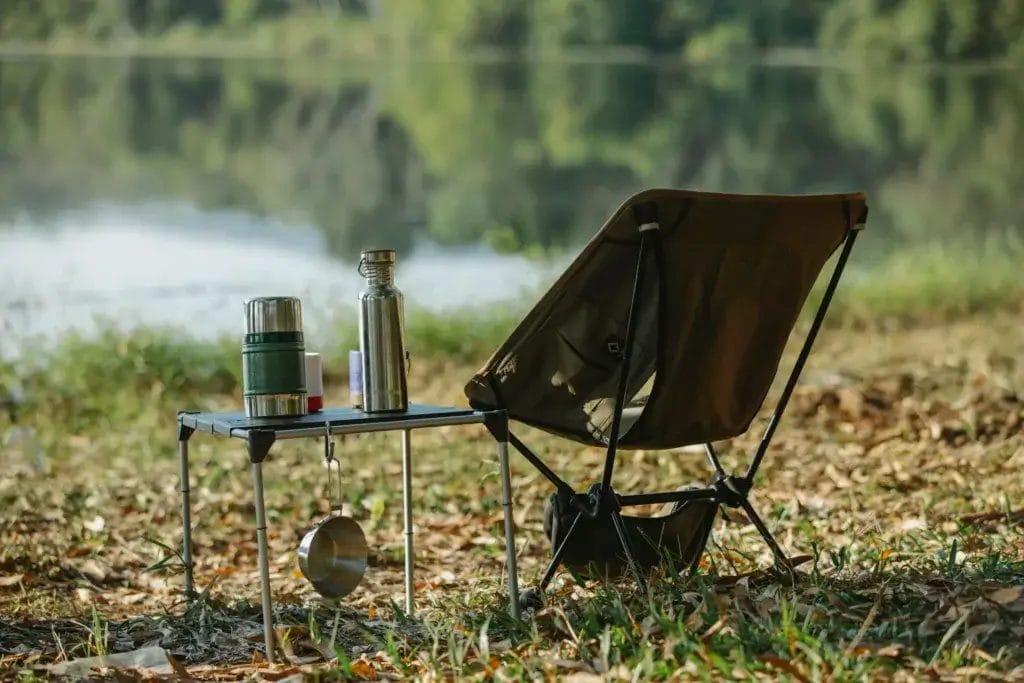
I get asked the same camping questions again and again, and honestly, I get it. Forgetting something important can make anyone anxious about heading out for their first few trips.
Let me share a few answers that have helped a lot of families (including mine) enjoy stress-free adventures outdoors.
What are the top items you shouldn’t forget when packing for a family camping adventure?
Some items just make or break a family camping trip. My top must-haves: a solid first aid kit, extra batteries for flashlights, and a huge stash of wet wipes.
Rain gear for everyone is a must, even if the forecast is sunny. The weather turns fast, and I’ve seen too many folks scramble when a surprise shower hits.
I always pack extra clothing layers, especially warm jackets for the evenings. Kids get cold way faster than adults, and cozy options keep everyone happy around the fire.
I also bring entertainment for downtime, like cards, books, and travel games. These weigh almost nothing and save the day when you’re stuck in the tent during a storm.
Can you suggest a comprehensive checklist for tent camping that covers the essentials?
I start with the basics: tent, ground tarp, sleeping bags rated for the weather, and sleeping pads for comfort. Essential camping gear keeps you safe and comfortable the whole trip.
For cooking, I pack a camp stove with extra fuel, a lighter or matches in a waterproof case, cookware, and utensils. A sharp knife, cutting board, and a cooler with ice packs always make the list.
Personal stuff includes toiletries, toilet paper, hand sanitizer, meds, and sunscreen. I toss in headlamps or flashlights with extra batteries for everyone.
For safety, I bring a first aid kit, whistle, rope or paracord, and a multi-tool. You might not need them every trip, but when you do, you’ll be glad you have them.
How do you efficiently pack for camping with kids to ensure nothing important is missed?
I make separate packing lists for each kid and get them involved. It teaches responsibility and helps make sure their stuff actually makes it into the car.
Kids’ gear goes in their own bags or bins so they can find things easily. I like using clear storage bins—everything’s visible and organized.
I always bring extra clothes, socks, underwear, and shoes for the kids. They get dirty and wet way more often than adults, and backups save a lot of meltdowns.
I also pack comfort items like favorite stuffed animals or blankets. Those familiar things help kids settle in and sleep better at night.
Activity bags with coloring books, crayons, small toys, and snacks are lifesavers. Having these ready keeps boredom at bay during car rides or quiet camp moments.
What are the five items that absolutely must be in your backpack for a successful camping trip?
My top essential? A reliable water filtration system or purification tablets. Clean drinking water is non-negotiable for health and survival.
Next up is a quality multi-tool. I use mine for food prep, gear fixes, and a dozen other random tasks around camp.
Fire-starting gear comes third – waterproof matches, a lighter, and some tinder. If you can’t make a fire, you can’t stay warm or cook food.
Fourth, I pack an emergency shelter like a space blanket or bivy sack. These weigh almost nothing and could be a lifesaver if your main shelter fails or you get lost.
Finally, a comprehensive first aid kit rounds out my top five. Accidents happen, and having supplies on hand makes a world of difference.
Could you provide tips on the most important camping gear to include for a stress-free nature getaway?
I always put comfort at the top of my list. Good sleep makes everything easier, so I invest in quality sleeping bags and pads.
Lighting is crucial for both safety and convenience. Headlamps for everyone and lanterns for the camp area are my go-to choices.
Weather protection is non-negotiable. Rain gear, extra tarps, and warm layers, even in the summer, keep trips on track and spirits up.
Food storage and cooking equipment should be easy to use and reliable. Camping preparation just goes smoother when your gear does double duty.
Cleaning supplies like biodegradable soap, paper towels, and trash bags help keep camp tidy. A clean campsite just feels better, and it’s way better for the environment.
What’s the best way to organize your camping gear using a checklist or spreadsheet?
I like to break my master checklist into categories. Shelter, sleep system, cooking, clothing, personal care, and safety items all get their own sections.
This way, I don’t accidentally skip a whole category and leave something essential behind. It happens more often than I’d like to admit.
For each style of camping I do, car camping or backpacking, I keep separate checklists. The gear is just so different, I find it’s easier this way.
After every trip, I update my lists. If I forgot something or packed stuff I never used, I jot down notes right away so I don’t repeat mistakes.
I usually share digital copies with whoever I’m camping with. It saves us from bringing doubles of everything, and nobody ends up without a sleeping pad or stove.
As I pack, I check off each item. Right before I leave, I do a quick final review, just in case.
Sometimes I snap a photo of my packed gear. It helps me remember how I fit everything and makes repacking at the campsite way less stressful.




